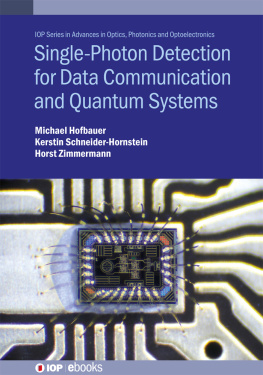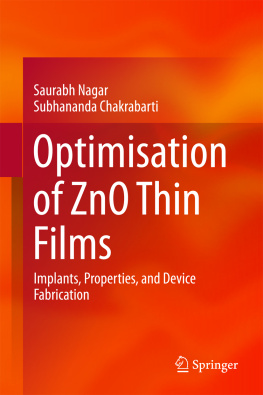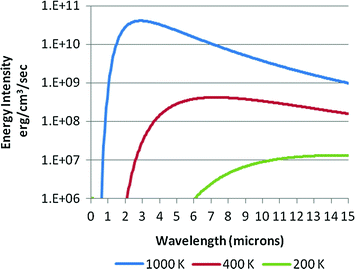1. Introduction to Infrared Detectors and Quantum Dots
Abstract
The majority of objects, those with a temperature between 100 and 400 K, emit strong electromagnetic radiation in the infrared region, especially in 114 m region, which includes short-wavelength infrared (SWIR, ~1.03.0 m), medium-wavelength infrared (MWIR, ~3.05.0 m), long-wavelength infrared (LWIR, ~8.014.0 m) and some part of very-long infrared (VLWIR, ~14.0100.0 m). MWIR and LWIR detectors are widely used today in a variety of imaging and video-graphic applications, in fields such as spectroscopy, night vision, thermal imaging, health science, and space research and defence. Different types of IR detectors are based on various semiconductor materials, such as Si, InAs1 x Sb x , Pb1 x Sn x Te, and Hg1 x Cd x Te. To overcome limitations in extending the detection wavelength in longer wavelength region the idea of intersubband transition based photodetectors has been introduced. The spacing between different electronics subbands (a few tenths to hundreds of meV) allows emission or detection of a broad range of IR radiation. Quantum mechanical properties dictate that if any material is scaled down to very small dimension both the conduction and valence band can be split into a number of intersubband energy levels. The dimension of the bulk can be reduced to form different nanostructures, such as quantum wells (QWs), quantum wires and quantum dots (QDs). QDs confine the carriers in all three directions, which results in a complete delta-like DOS in the different energy levels. In recent past MBE grown IIIV semiconductors based quantum dots infrared photodectors (QDIPs) have emerged as a potential candidate in the field of MWIR and LWIR imaging technology. Their 3-D carrier confinement provides intrinsic sensitivity to normal incidence radiation, lower dark current and a long excited-state lifetime compared to quantum well infrared photodetectors (QWIPs).
1.1 Introduction and Evolution of IR Detectors
A detector is a device able to sense a signal from its surroundings. Detectors exist for various types of input signal, which can be mechanical vibration, electromagnetic radiation, small particles and other physical phenomena. A photodetector is a sensor that detects electromagnetic (EM) waves and converts them into a measurable output signal, such as electrical current or voltage. A large variety of photodetectors , based on different materials and technologies, suit a variety of specific purposes [].
The region in the wavelengths between ~0.74 and 100.0 m is known as the infrared (IR) region. The IR region is divided into different windows, such as near infrared (NIR, ~0.741.0 m), short-wavelength infrared (SWIR, ~1.03.0 m), medium wavelength infrared (MWIR, ~3.05.0 m), long-wavelength infrared (LWIR, ~8.014.0 m) and very long infrared (VLWIR, ~14.0100.0 m).
In 1901, Max Planck described the emission of EM radiation from a black body source with the variation in temperature. He formulated an equation which measures the amount of EM radiation emitted by a blackbody source at different temperatures []. Total energy density of black body radiation is given by
where

,

,

,

,

are speed of light, Plancks constant, frequency of radiation of the blackbody, Boltzmanns constant and absolute temperature of the black body respectively.
This theoretical equation, which is known as Plancks law, has a good agreement with experimental results. The variation of the emitted photon flux as a function of temperature of the black body is shown in Fig. It shows that the majority of objects with a temperature 400 K emit strong EM radiation in the infrared region, especially in the region of 114 m.
Fig. 1.1
Emission spectra of a blackbody at different temperatures
But the transmittance of EM energy through the atmosphere varies significantly for different wavelengths. There are convenient windows in IR region where atmospheric absorption is minimal. Two of these transmission windows fall in the MWIR and LWIR bands (Fig. ]; MWIR and LWIR detectors find wide application in a variety of imaging and video-graphics applications, in fields such as spectroscopy, night vision, thermal imaging, health science, space research and defence.
Fig. 1.2
Atmospheric infrared-light transmissions as a function of wavelength
IR detectors are divided into two broad categories []. The first category is thermal detectors. A thermal detector absorbs incident radiation in the form of heat. The heat changes the material temperature of the device, altering its physical properties and producing an electrical output. The other category produces an output signal resulting from change in its electrical properties when it absorbs incident radiation in form of energy. While photodetectors usually require a low-temperature environment for best performance, thermal detectors can operate at room temperature though they tend to suffer from low sensitivity and slow response times.
IR detectors became popular in the 1950s in defence applications. The availability of incorporating controlled-doping technology in semiconductors, allowed use of extrinsic photoconductive detectors specially for LWIR and VLWIR, followed by the development of Si-based charge-coupled detectors (CCD). The introduction of semiconductor alloys, such as IIIV (InAs1 x Sb x , InGa1 x As x ), IVVI (Pb1 x Sn x Te), IIVI (Hg1 x Cd x Te) etc. materials, in the 1960s changed the scenario significantly. These materials provide the ability to tune the detection wavelength over a broad range by engineering its band gap. In 1973, metal silicide/silicon Schottky-barrier detectors were introduced which had the advantage of being compatible with advanced chip based electronic readout system []. Photodetectors based on HgCdTe (MCT) dominate IR imaging technology; however they suffer from serious disadvantages, including high dark current caused by band-to-band carrier tunnelling. Other problematic issues relate to the health hazard the material creates and growth-related problems, such as the difficulty of obtaining uniform composition of material for large wafers, softness of the grown material and difficulty in controlling the compositional stoichiometry.










 ,
,  ,
,  ,
,  ,
,  are speed of light, Plancks constant, frequency of radiation of the blackbody, Boltzmanns constant and absolute temperature of the black body respectively.
are speed of light, Plancks constant, frequency of radiation of the blackbody, Boltzmanns constant and absolute temperature of the black body respectively.
